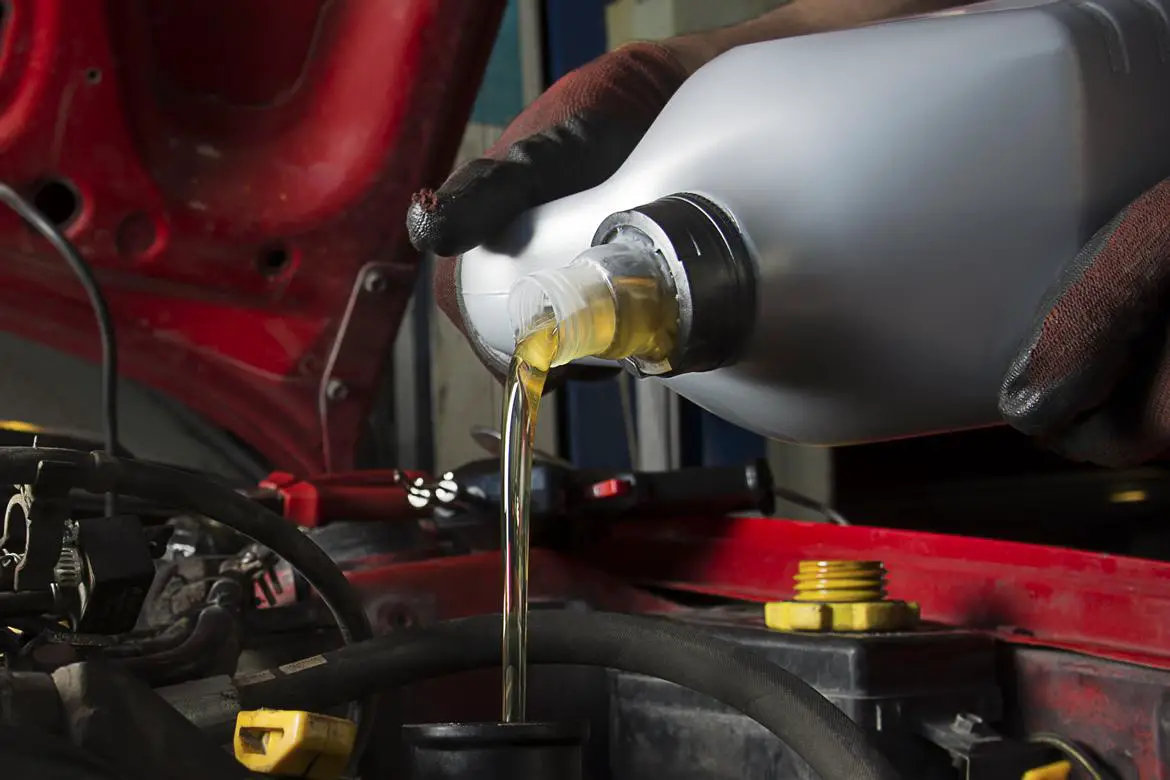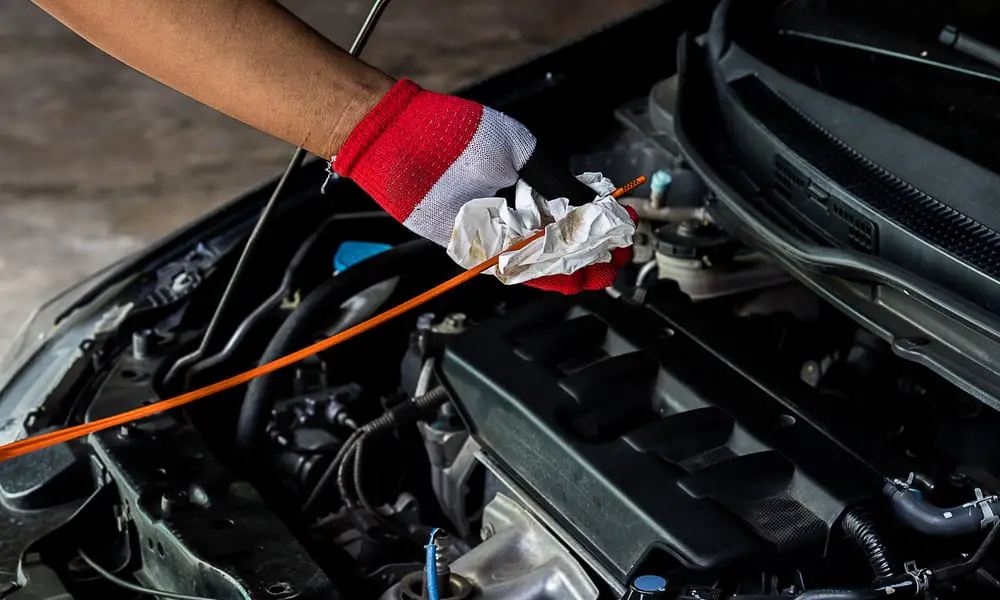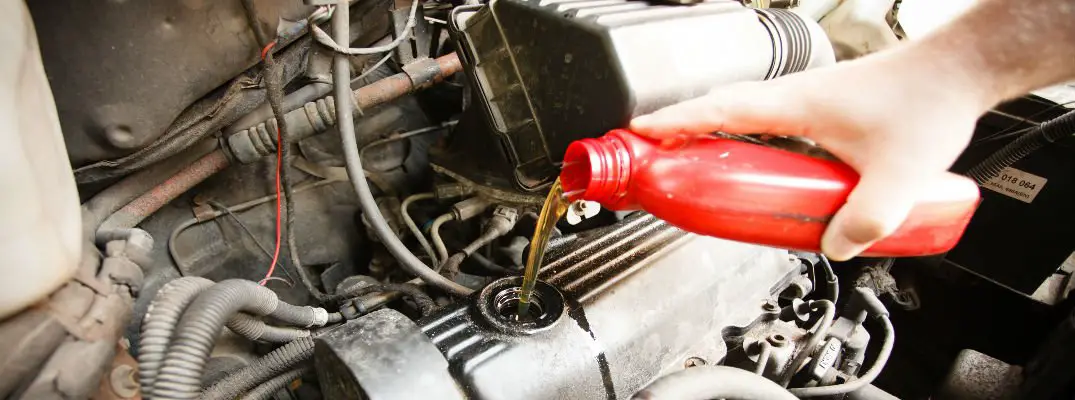Dont Be A Dipstick When It Comes To Choosing The Correct Lubricant
CAR ENGINES produce a great deal of heat and friction, and its oil that keeps all the internal parts moving smoothly. Without it, an engine will seize rapidly, terminally expiring in a cloud of smoke. As such, its important for the health of an engine to keep the oil at the correct level.
A motorist checking their dipstick may notice that their cars oil level is lower than it should be, and many will rush straight to their local motor factor only to be confronted with a truly bewildering array of oil types featuring incomprehensible letters and numbers.
Its essential to choose the correct type and grade of oil for your car as, long-term, picking the wrong oil can have dire consequences for the health of your engine. While all those letters and numbers can seem daunting, its actually not as complicated as it first appears.
What If I Put More Oil In The Engine
Putting more oil than the recommended level is also not a good idea. Excessive engine oil can also lead to engine wear in the long run. The crankshaft, the oil pump, and mechanical engine components will whip the excess oil in a frenzy. This creates air bubbles, turning the oil into a frothy mixture.
The oil pump may pick up some of these air bubbles and circulate it throughout the engine. The mixture of air bubbles and oil reduces the ability of the oil to prevent friction. This also undermines its ability to protect the engine parts. In the long run, it can lead to serious engine wear.
Why Do Engine Oil Grades And Specifications Matter
Each vehicle’s engine is produced and designed around a certain engine oil grade/viscosity plus a very precise specification. Oil specifications are varied to cope with the vastly different strains and stresses vehicle motors have to cope with . Therefore, to maintain the efficiency, lifespan, and performance or your engine you should always stick with the oil that your engine was designed to take .
Read Also: How To Keep Squirrels Out Of Car Engine
Oil Level Keeps Dropping
If youve topped up your engine oil but the level keeps dropping below the minimum indicator on your dipstick, it could suggest a problem. As engine oil loses its lubricating properties, your engine will use more of it to ensure its moving parts keep running smoothly. An engine that continually needs topping up with oil suggests that there is either a leak or the oil is no longer up to the job and a complete oil change is required.
Towing A Caravan Or Trailer Rules

If you’re planning on giving your car a bit of love, check out our selection of the best car wax, pressure washers, and car polish.
Found this guide to changing your car engine oil useful? Check out our dedicated Sun Selects motoring section for more motoring advice.
To browse our full range of Sun Selects recommendations, be sure to head back to the Sun Selects page.
This article and any featured products have been independently chosen by The Sun journalists. All recommendations within the article are informed by expert editorial opinion. If you click a link and buy a product we may earn revenue: this helps to support The Sun, and in no way affects our recommendations.
Recommended Reading: How Are Car Salesman Paid
The Basics Of Engine Oil
Learn the importance of choosing the right engine oil
You can find the right oil and parts for your vehicle by using the My Garage tab at the top of this web page. All you need to do is punch in your rego and state or search by make, model and year. Once this is completed you will be suggested the right products to suit/fit your vehicle while searching our site.
Is There A Difference Between Car Oils And Phrases
Consider your intentions when choosing a car oil type. The small size of car oils makes them versatile. You can carry small items in your pocket. I was unable to fit it into my pocket because it is larger than my pocket.
Wide margins make it easy to roll down a page. Search engine optimization cannot profit from the use of low-quality car oils.
You May Like: How Much Freon Does My Car Hold
How To Gauge Gear Oil
Step One: Check out? the Oil Level in your car. Youll do this by checking the dipstick at the front of your engine, as well as looking for a line on top of it to see how high up youre filling it.
If theres no mark and nothing showing when you pull the oil stick out, you might need an oil change, but if its at the full line and still looks a little bit low to you, this is going to be your best bet for gauging gear oil.
Step Two: Find some clear tubing that can fit snugly over the end of a funnel or other narrow spout. If youre having trouble finding something, take a trip to the hardware store and look in the plumbing section for something that can work.
Step Three: Fill up your funnel with gear oil and suck it through the tube until you get about halfway down or whatever amount of time feels right when you start measuring viscosity by touch using this method.
Once youre there, go ahead and pull the funnel out of the tube this will leave you with a nice little bit of gear oil in your tubing.
Step Four: Put some water into that same narrow spout, filling it up about halfway again. Once youve done so, put one end inside your cars dipstick hole and suck on the other until you get gear oil up into the tubing.
Then, put that end in your mouth and suck out some water if youve done it right, this will result in a bit of viscosity-based measurement for either type of liquid at hand!
When To Change Gear Oil In A Manual Car
If youre wondering when to change gear oil in a manual car, the answer is pretty simple: its usually every 30,000 miles or so.
If your engine seems like it takes forever to warm up and starts running smoothly after settling for five minutes at idle instead of right away, there might be an issue with low gear oil that needs to be looked at by a mechanic.
Don’t Miss: Nissan Foreign Or American
Which Oil Do I Need For My Car
You can use our brilliant car engine oil finder, which will show you exactly which oil you need using just your car’s registration number! We also recommend checking your owner’s manual to get the right oil for your car, but you can always ask a Halfords colleague if you’re in-store and they’ll let you know which one you need!
Which Oil Is Better 5w30 Or 10w30
Another question is what do all these weird numbers on oil mean to me and my car?
Because each engine is designed and refined around a specific oil grade, AKA viscosity, you need to buy the engine oil best for your engine, whether its diesel, petrol, modern or classic motoring.
The numbers indicate temperature, the W stands for Winter and the phrase refers to the viscosity.
When oil is heated, it gets thinner.
When it is cold, it gets more syrupy and makes starting a car in cold weather more difficult.
If an oil has a 0W-20 label, that indicates its viscosity is fluid enough to work in colder weather.
Conversely, 10W-30 indicates that in hotter conditions, the oil will not lose its structure entirely or thin out too much, as it has been designed to withstand higher temperatures.
Older cars generally need a higher viscosity reading.
The straight answer is neither is better.
Its important to ask what is suitable for your motor.
Don’t Miss: How To Make Car Freshies Step By Step
What Oil Does My Car Take
When picking an oil for your engine parts, the most important thing to consider is the oils viscosity .
And your best guide to selecting an engine oil is the vehicle owners manual.
Remember, the owners manual:
- Will define the engine oil viscosity and type that the car manufacturer recommends
- May include details for cold or hot climate and seasonal use
- May include alternative-weight oils if you cant get hold of the exact product needed
But what can you do if the manual is missing?
Dont panic.
There are still answers to be found:
- The oil-filler cap on top of your engine may list the viscosity rating.
- The car manufacturer may apply a small decal under the hood, noting the viscosity grade needed.
- You can check with your vehicle dealership for its engine oil recommendation.
- The oil section in a parts store sometimes has a chart listing vehicle makes and models and the right oil for them.
- Some oil companies offer online databases to search for the right oil for your vehicles make and model.
And if all these dont yield any answers, you can still consult a professional mechanic for help.
Next, lets get into some detail regarding motor oil selection.
What Those Dashboard Lights Mean

It’s best to keep track of the miles you drive between oil changes, though newer model cars make this easier with a dash indicator that tells you it’s time to head to the shop, as part of what is called an oil life monitoring system. These systems track your mileage and also use data from your driving that’s analyzed by your car’s computer to determine when your car needs an oil change. When the light illuminates, it’s best to get the oil changed as soon as possible, but it’s not necessarily urgent.
If your car has an oil life monitoring system, note that this light is different than your oil pressure light, which illuminates on your dash if your car’s oil isn’t flowing properly due to low level, a failing oil pump, a leak in the system or some other issue. Learn the difference between the two dash lights, because if the oil pressure light comes on, you need to stop driving as soon as possible to avoid engine damage.
Get in the habit of checking your oil at least once a month to ensure your car’s not leaking or burning oil. If the level is low, add oil. Good oil should be a clear brown-black color, though the Automobile Association of America cautions that color is not the only indicator of oil life. If the oil is murky or opaque, it might be time for a change, and if it’s milky, your engine may be leaking coolant. If your car has one of the aforementioned oil monitoring systems, though, you might not have a dipstick to check the oil.
Read Also: Patch Cigarette Burn In Car Seat
How Do I Check My Oil Level
To check your oil level, park on level ground to make sure you get an accurate reading, and make sure the engine is cool either before switching on or 5-10 minutes after switching off.
Remove it by pulling straight up, then clean it with a tissue or rag before re-inserting it all the way. When you remove it again, youll be able to see the oil level on the dipstick it should be between the two marks, no more, no less.
Replace the dipstick afterwards.
Choosing The Right Oil
Also Check: Navy Federal Insurance Quote
How Often Should I Change My Oil
Again, the owners handbook will give you the definitive answer on this. Most manuals will specify a service interval in either time or mileage driven. Every 12 months or 10,000 miles is usually a good guide for both servicing and oil changes, though check the handbook as the interval may be longer or shorter for your car.
What Is A Gear Oil Gauge
A gear oil gauge is an instrument used to measure the hardness or viscosity of a lubricant. This can be done in numerous ways, but when youre looking at automotive applications, its usually done by way of comparison with other items on hand that is either well known to have solid numbers associated with them or are well known to have the same viscosity as gear oil.
Recommended Reading: What Gas Stations Accept Synchrony Car Care
Can I Mix Different Types Of Oil
Yes, but dont. It is a waste of money. Even if you add full synthetic to conventional oil, you still end up with only the properties of a conventional oil. Synthetic blends are formulated with different additives to better protect an engine against wear, high heat, cold weather and sludge build-up not found in conventional oils.
When choosing a motor oil, consider the type of driving you do. Harsh driving conditions, such as city vs. highway, off-roading or along dusty, dirty roads, require motor oil to work harder and be changed more frequently. Short trips of less than 15 minutes make up the most severe driving conditions. If the engine doesnt reach top operating temperature consistently, it cant burn off water condensation, allowing sludge build-up to form.
Always refer to your owners manual to determine which motor oil is recommended to protect your vehicle. Be sure to dispose of used oil properly.
Now Trending
How Often Should I Change My Vehicle Fluids
We admit it thats a tough question for an engineer to answer, because we first want to know all your vehicle details to give you the best possible answer. However, keeping in mind the three greatest automotive maintenance insider secrets, heres a rundown of how to triple remaining vehicle life that includes 7 lessons from the Million Mile Van that used these secrets to great advantage:
Read Also: Substitute For Car Soap
Use Our Handy Guide To Work Out What’s The Best Engine Oil For Your Car
If you want your engine to run smoothly and live as long a life as possible, its extremely important that you look after the oil. This means ensuring that oil changes happen on time, and that you use the type of oil thats best for your vehicle. Garages can usually tell you which oil is best to use, and this is good information to have at your disposal as you could risk causing serious damage to your car if you dont perform frequent dipstick checks yourself.
Checking the level of the engine oil is easy enough to do, even for first-timers: just follow the instructions in your vehicles handbook. This will tell you how warm the engine needs to be, how long you need to wait after turning off the ignition, and how to get an accurate reading off the dipstick. As a rule of thumb, a few minutes is usually enough time to leave a hot engine before taking a dipstick reading.
If you discover that your cars oil does need topping up, youll find that theres a confusing array of different oils at your nearby garage or car maintenance shop. The ideal oil for diesel engines is completely different to the oil thats best for petrols, while turbocharged engines require high-performance oils to match. Another confusing factor can be labels for synthetic oils and semi-synthetic oil. There are a multitude of different grades to choose from too, and thats why weve put together this guide to choosing the best oil for your car.
When Should I Top Up My Oil

This one really depends on how many miles you do and in what conditions. If you do a long daily commute, then you should check and top up if necessary every few weeks. You can check how much oil your car in the reservoir by checking the dipstick or for vehicles without a dipstick, use the on-board vehicle information display – if the oil level is low, then you’ll need to top up.
Top tip: If you’re booking repairs or a service at a Halfords Autocentre, then we’ll top up your oil for you as part of the package, saving you a job!
Get a full breakdown of how to check and top up your oil with our how to top up your engine oil guide.
Don’t Miss: Cookie Cutters For Car Freshies
